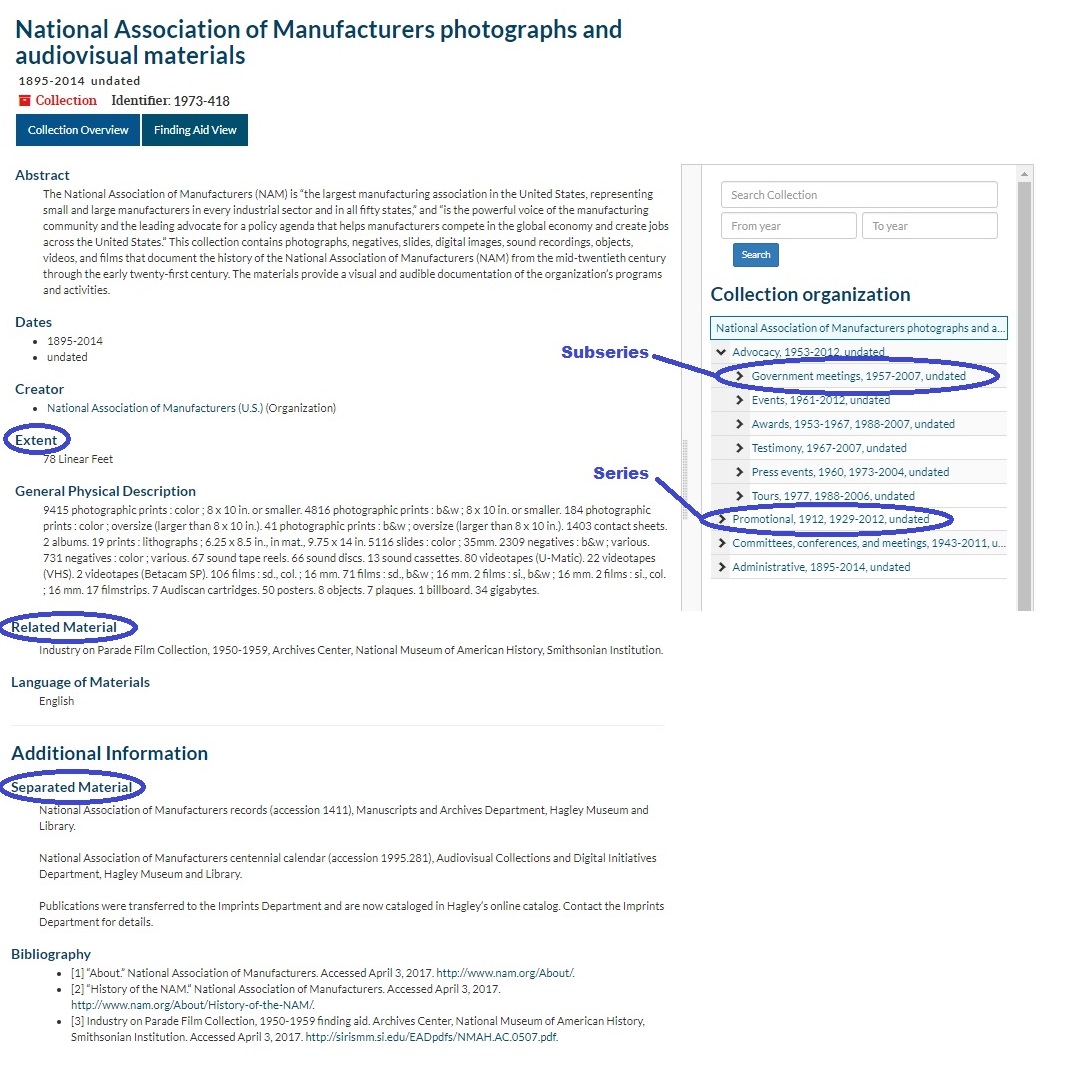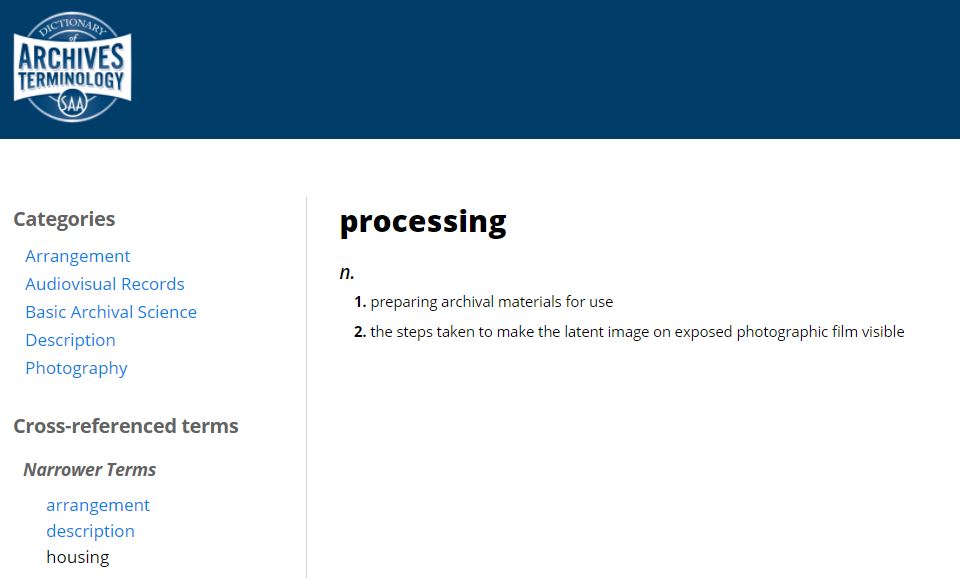Archivists and the archive field, like so many fields, have their own vocabulary that might be unfamiliar to researchers and the public. In honor of archives month and in preparation of publishing the National Association of Manufacturers' finding aid, I thought I would highlight some of the commonly used terms and ones you might find in our database.
Processing – preparing archival materials for use. Archivists process collections to make them ready for researchers to use.
Finding aid/collection guide – “a description that typically consists of contextual and structural information about an archival resource” (SAA dictionary). Okay, let’s break this one down a bit more. A finding aid is a guide to the collection that directs researchers to a specific collection and then where to find specific information within a collection. Finding aids often include a biographical or historical note, scope or description, size, subjects, arrangement, and an inventory of the series and folders. Many of Hagley’s finding aids can be found here in our finding aids database.
Accession number – a number assigned to uniquely identify a group of records or materials. The accession number can also be referred to as the collection number.
Extent – a description of the physical quantity of the material described. Hagley Library typically measures in linear feet, but it can also include byte size for digital components.
Series – a group of similar records that are arranged according to a filing system and that are related as the result of being created, received, or used in the same activity. Similarly, a subseries is a body of documents within a series readily distinguished from the whole by filing arrangement, type, form, or content. Series and subseries help break a collection into smaller, but similar, chunks. For example, in the NAM collection, each department is its own series because they are distinguishable from each other.
Born-digital – content created in a digital environment. Examples include Word documents created on a computer, a photo taken with a cell phone, or an email. It is possible to have the same document in digital and analog (or paper) format. Born-digital content is different then digitized material, the latter describing a document created on paper that has been scanned.
Separated material – materials that have been come from the same source or collection that have been physically separated or removed. While it is possible to have separated material at a different repository, it is rare. At Hagley, separated material typically means there is material in a different department and therefore housing location: manuscript, audiovisual, or published.
Related material – archival materials that are closely related to the materials being described, either in the same repository or elsewhere. For example, the NAM records have related material at the Archives Center, National Museum of American History, Smithsonian Institution, as well as the Morris Sayre speeches (accession 1720) at Hagley.

I hope you have found the definitions for these terms useful. These, and many others, can be found in the Society of American Archivist (SAA) dictionary.
____________________________________________________________________________________________________________________________________________________________________
Ashley Williams is the project archivist for the NAM Collection at Hagley Museum and Library.

